| Year-round Resident | |
| Has Nested in Park |
Blue Jays are common year-round residents in the Washington metro area, and they breed at Monticello Park.
Where to See Them in the Park
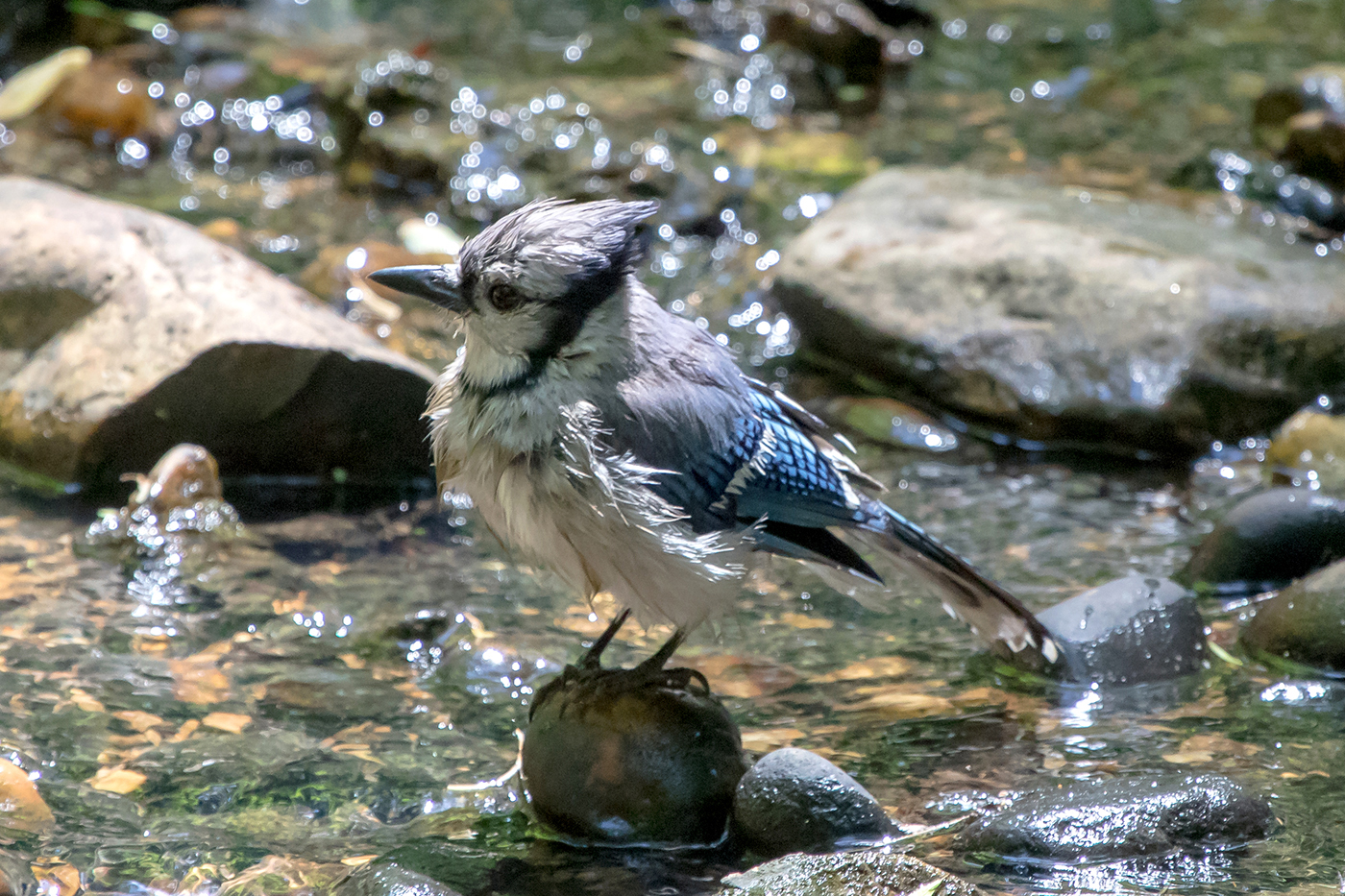
Blue Jays are active, noisy birds, so you should see one if you visit the park in the spring. They often stay close to the ground, and they frequently go into the stream to bathe and drink.
Physical Description
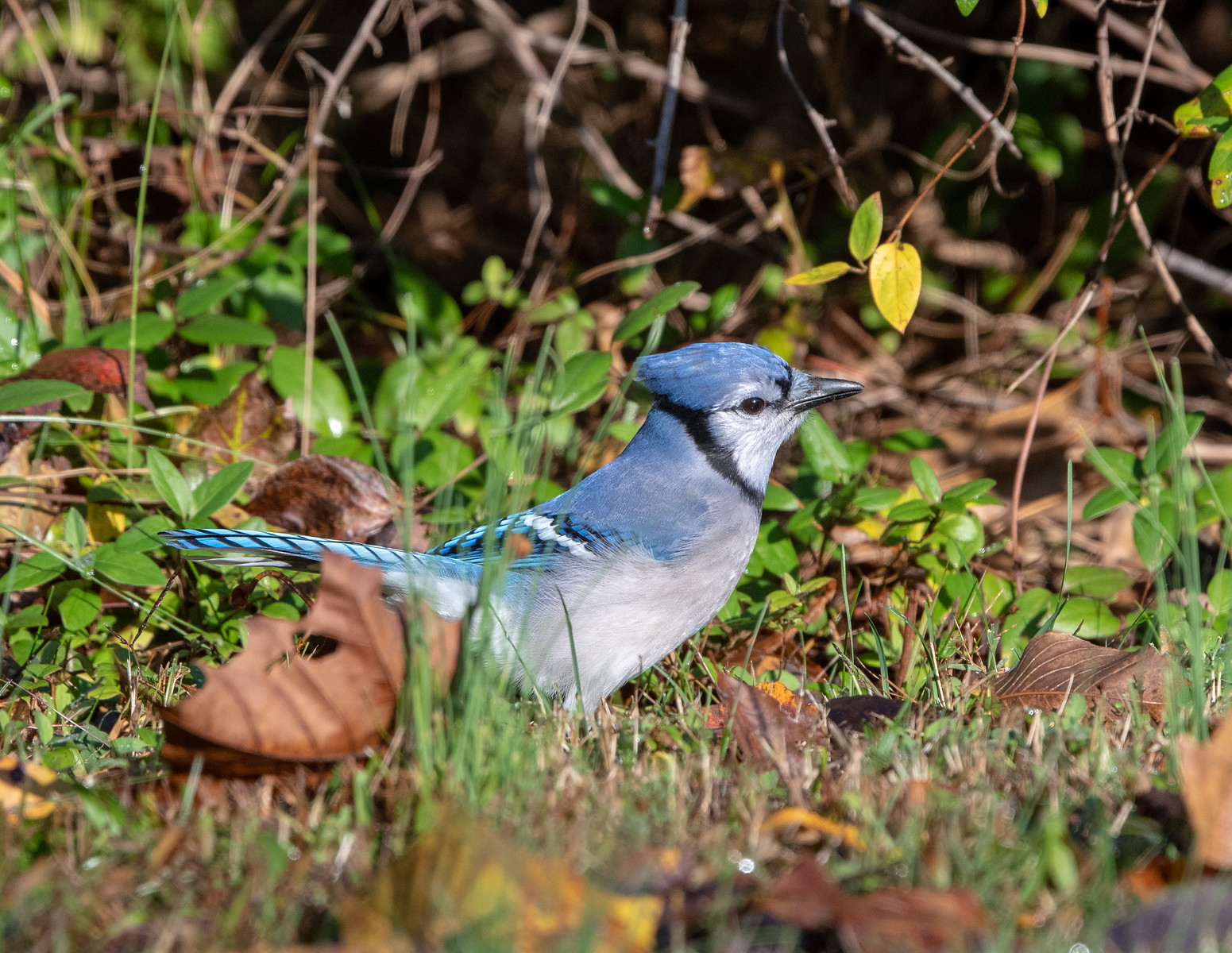
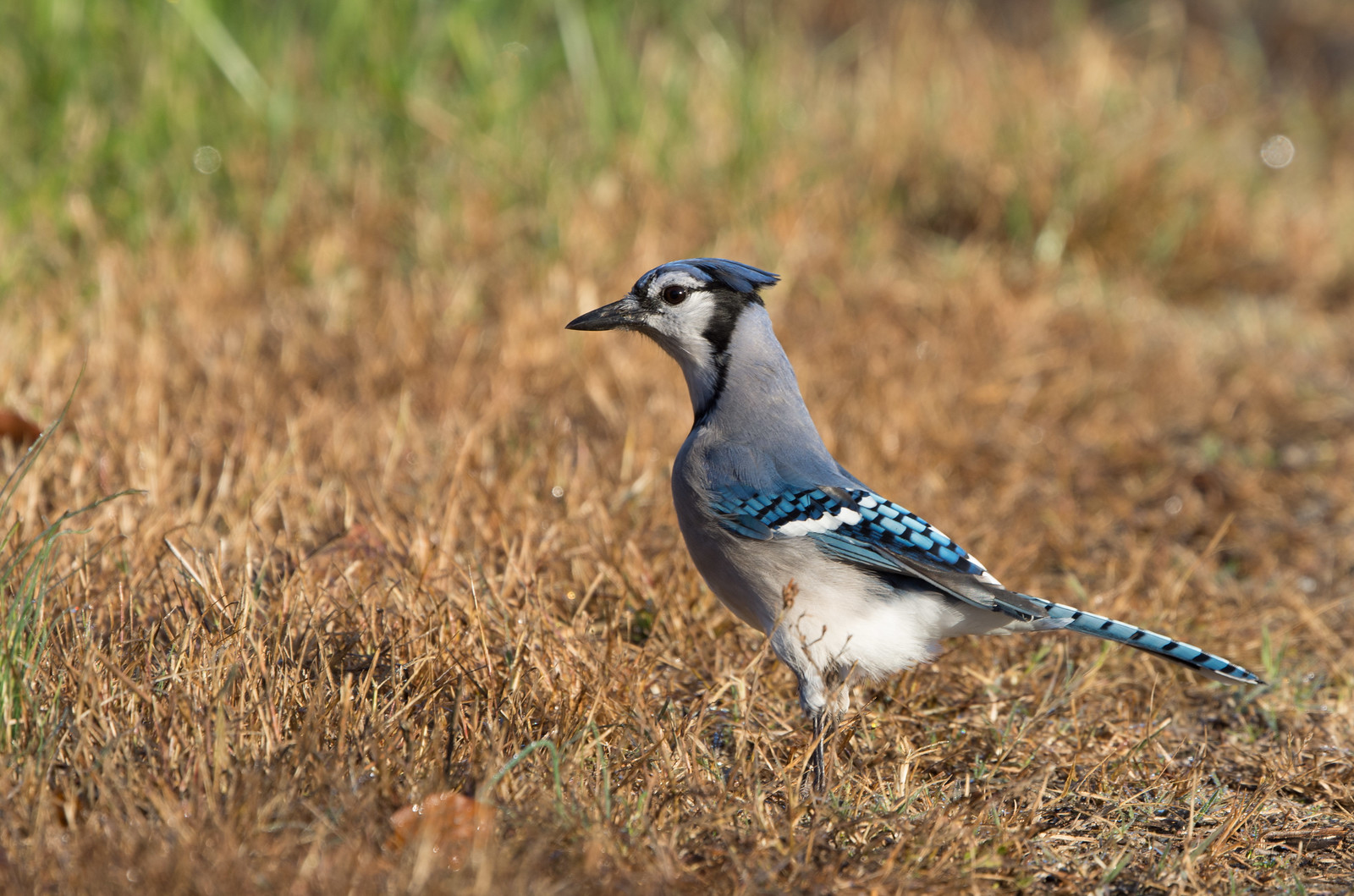
Blue Jays are large blue birds with a crest. Sometimes, the crest looks flattened rather than sticking up. The sexes look alike, and adult plumage looks the same in the spring and fall.
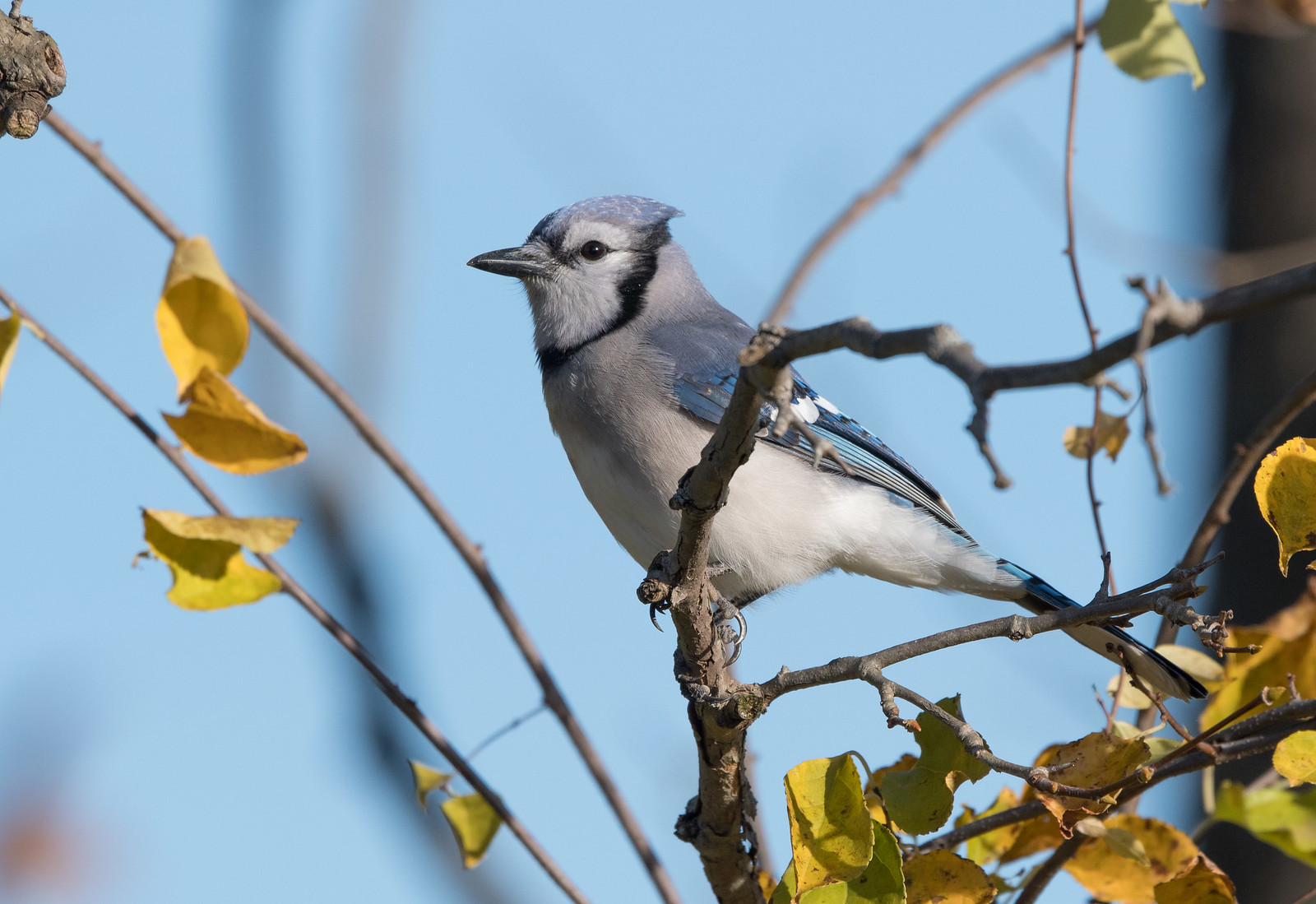
They have a ring of black feathers that goes around the back of their head and across the breast to form a necklace.
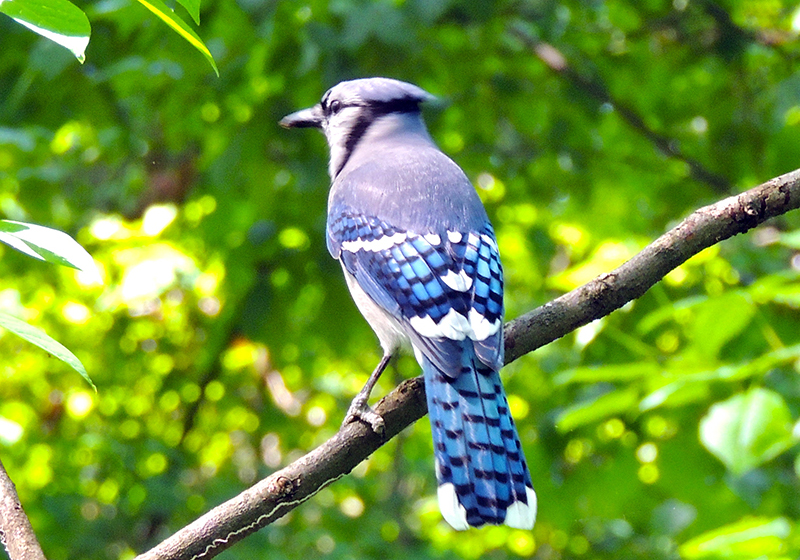
Their wing and tail feathers have black barring and are a brighter blue than their back feathers.
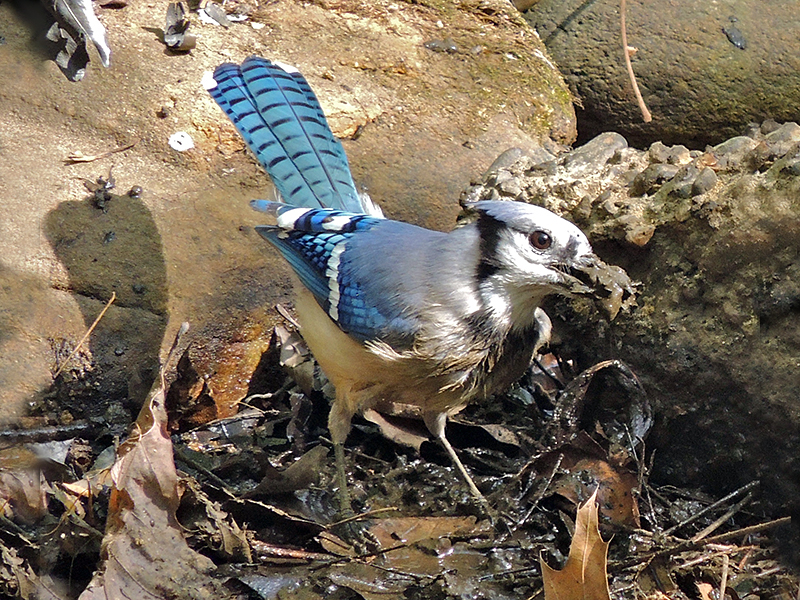
Blue Jays sometimes go into the stream to gather mud and other materials for their nest. At Monticello, some of their nests are in bushes near eye level, although they also build nests higher in trees.
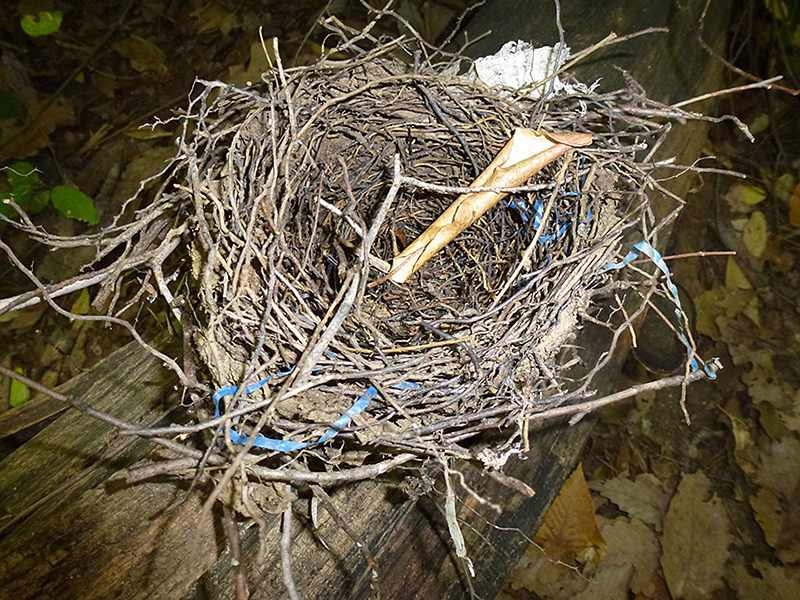
This Blue Jay nest was removed from a bush after the nesting season. It is a bulky cup about 8 inches in diameter. It is made of sticks, twigs, leaves, mud, and other materials. Note the pieces of blue plastic interwoven. Blue Jays frequently include man-made objects in their nest. It was probably not a coincidence that the plastic was blue, because Blue Jays and some other blue bird species seem to be partial to blue objects. In some instances, birders at Monticello have been concerned about Blue Jay nests that seem to have been abandoned. But Blue Jays often will build a preliminary nest in which they do not lay eggs. The male will gather material for this nest and present it to the female, who then builds it. For the nest in which eggs are laid, both the male and the female gather material and construct it, although the female does most of the construction.
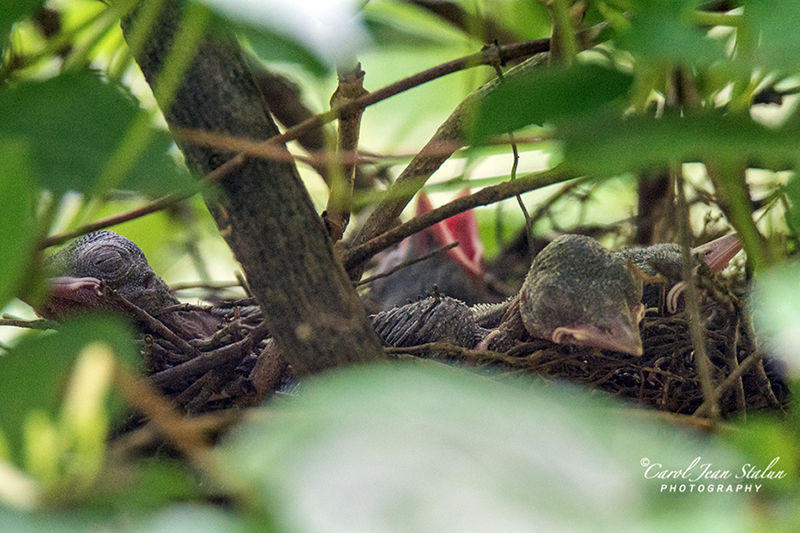
Blue Jays lay 2 to 7 eggs which are incubated for about 17 days. The hatched birds stay in the nest for up to 3 weeks. Both parents frequently bring food to the hatchlings. When the young leave the nest, they stay in a group with their parents, and they sometimes utter begging calls long after they are capable of finding their own food.
Vocalizations
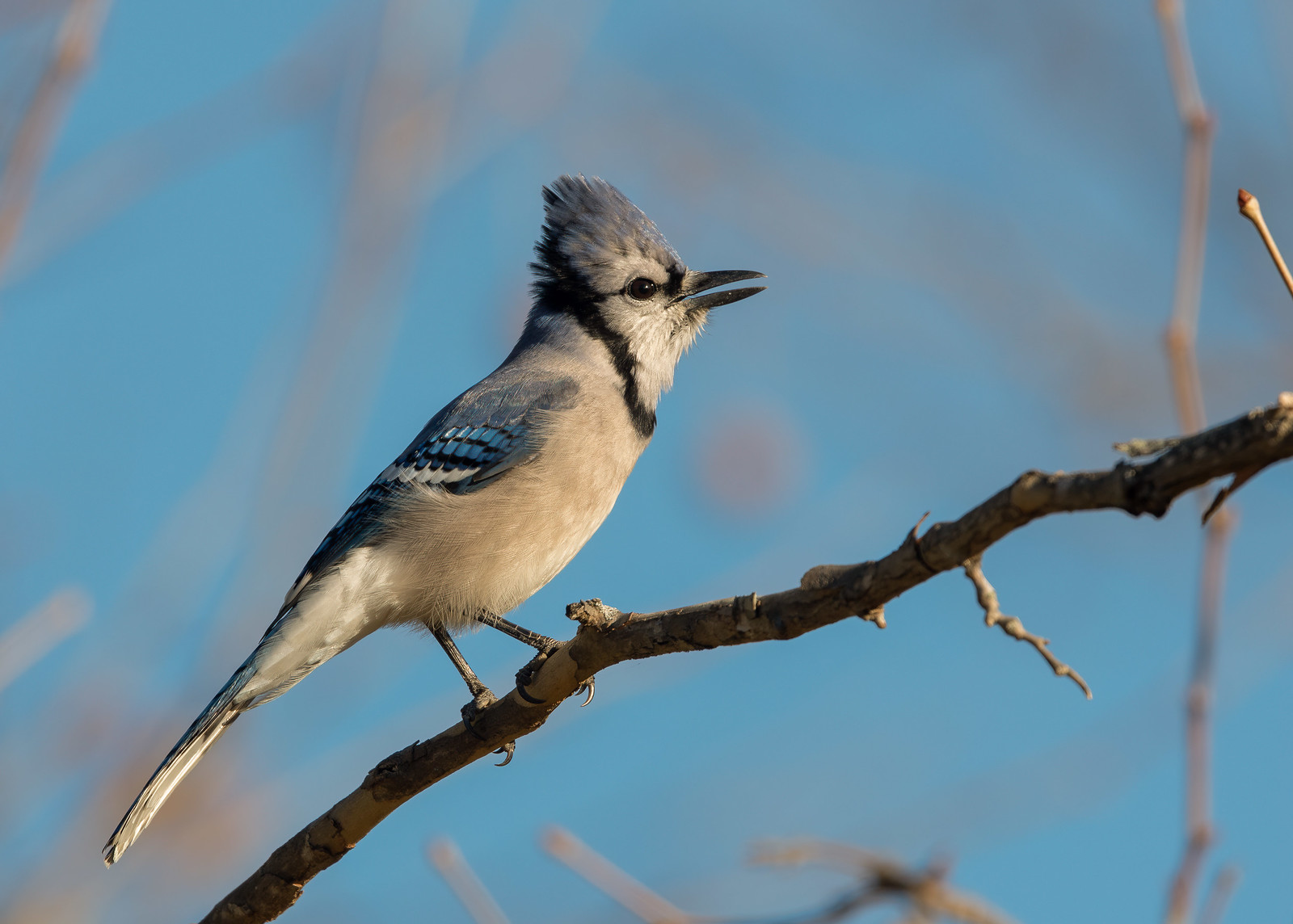
Blue Jays have a broad range of vocalizations, and they are accomplished mimics. A familiar call is a loud squawking JAY, which often is repeated numerous times. Another call sounds like quee-dle, which is often repeated. Blue Jays are especially adept at imitating Red-shouldered and Broad-winged Hawks. They might do this because many small birds are wary when they hear a hawk and often come out to investigate or mob it. When birds come away from their nests, Blue Jays can see where the nests are located. Blue Jays eat the eggs and nestlings of other bird species, so knowing nest locations can be useful for finding food.
Hear the vocalizations of the Blue Jay.Notes
Blue Jay feathers do not contain blue pigment. The feathers look blue because of the way light interacts with their internal structure. If you find a Blue Jay feather and hold it away from the light, it will appear gray. It is technically illegal to pick up a native wild bird's feather, according to the Migratory Bird Treaty Act of 1918. The act was passed in response to the carnage committed against many bird species to obtain feathers, many of which went onto women's hats. The bird plume trade was an impetus for the creation of Audubon Societies in the United States and the Royal Society for the Protection of Birds in Britain. It is legal to own feathers of introduced species, such as European Starlings or House Sparrows. In reality, you will not get busted for picking up a feather, even if you do it in front of the police, because most police are do not know about the Migratory Bird Treaty Act of 1918.
Origin of Names
Common Names: Blue from the plumage. Jay may come from the Latin gaius, which is a jay, probably based on the bird's harsh cry.
Genus Name: Cyanocitta is Greek for blue jay.
Species Name: Cristata is Latin for crested.
Blue Jay video footage
Return to the Index
